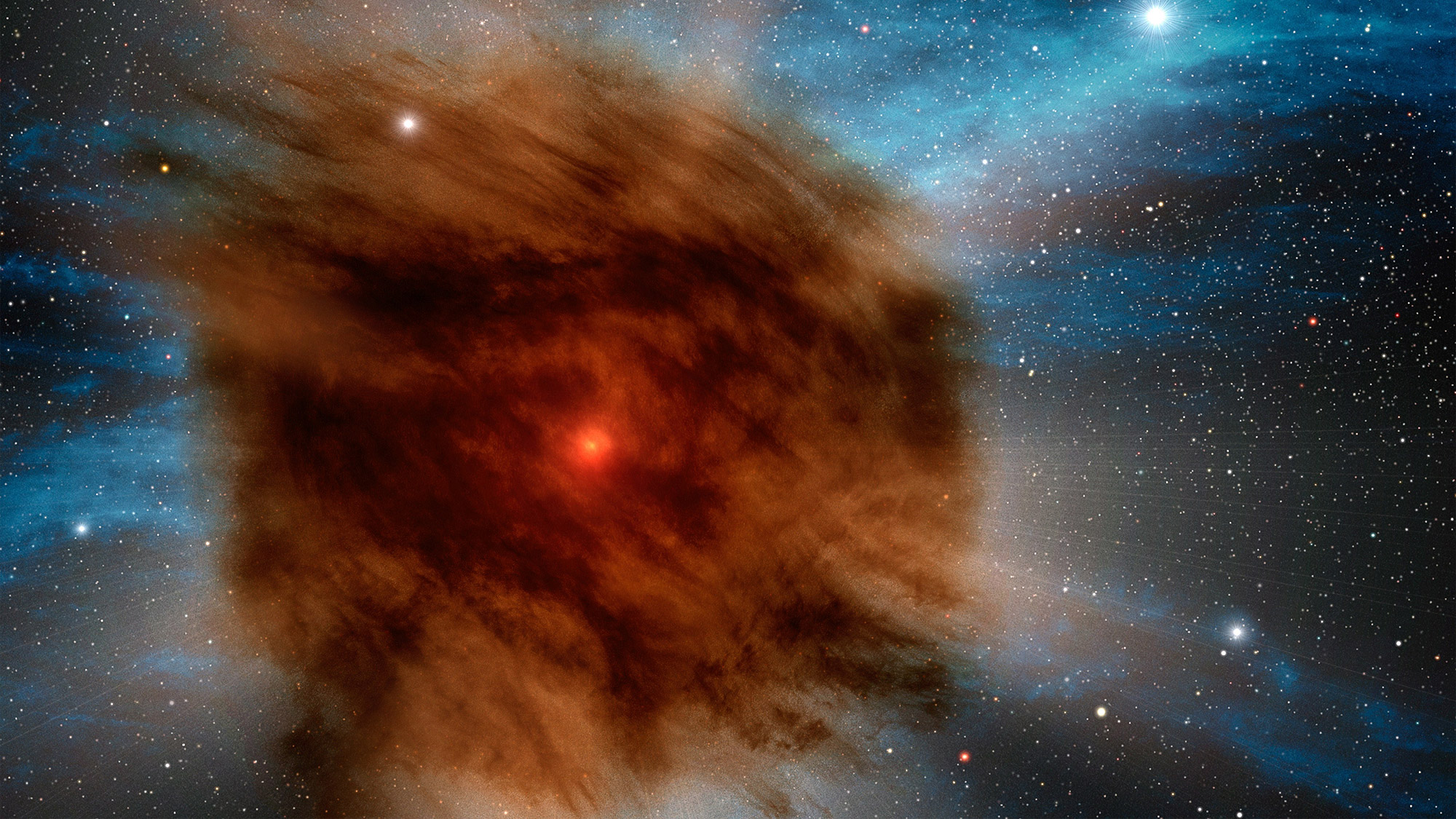Supernovas May Seed the Universe with More Stardust Than Predicted
More stardust came from supernova stars than previously thought

Scientists have discovered a new population of stardust that originated from supernovas. The finding suggests that more interstellar dust formed from these massive star explosions than scientists previously thought.
The quest to study cosmic dust samples brought to Earth by meteorites has been ongoing for the past 30 years. But this study marks the first time that scientists were able to distinguish components of the dust that were created by supernova explosions.
Using a nanoscale imaging spectrometer called Cameca NanoSIMS 50L, researchers at the Max Planck Institute for Chemistry in Germany were able to measure the chemical composition of tiny grains of stardust by observing them with unprecedented resolution. The researchers analyzed the chemical makeup of several grains of stardust, drawing conclusions about the cosmic origins of those grains.
Related: Supernova Photos: Great Images of Star Explosions
The team began its research with the aim of testing models for nucleosynthesis, or how new atoms are formed by red giant stars; these are dying stars in their last stages of stellar evolution.
"We did not expect to find that some of the grains are actually of supernova origin," Jan Leitner, a researcher at the Max Planck Institute for Chemistry and lead author of the new study, told Space.com.
The dust that formed our solar system 4.6 billion years ago contains a small but important fraction (about 1%) more supernova dust than anticipated, he added.
Get the Space.com Newsletter
Breaking space news, the latest updates on rocket launches, skywatching events and more!
Scientists have gone back and forth over whether a supernova could have contributed to the origins of our solar system.
"We don't understand how much dust comes from the stars, how much comes from supernovas [or] how much forms near the interstellar medium," Geoffrey Clayton, professor of physics and astronomy at Louisiana State University who was not involved in the new study, told Space.com. "That's a very hot topic."
This recent study, Clayton added, shows how you can analyze material from space closely in the lab.
By studying the dust up close, the team of researchers could measure the levels of magnesium found in these presolar dust grains, or grains that originated before the sun existed. The results showed that a fraction of the dust could not have been formed by red giant stars and, therefore, must have come from supernova explosions instead.
"Technology lets us get more and more details and look at smaller grains," Angela Speck, a professor of physics and astronomy at the University of Missouri who was not involved in the new study, told Space.com.
According to Speck, this study reinforces the notion that we are all made of stardust, or rather our atoms all came from materials in stars. There was an earlier idea, she added, that all of that stardust had come from supernova. However, that idea was later proved wrong.
A 2004 review paper in the journal Annual Reviews of Astronomy and Astrophysics suggested that 90% of presolar grains came from lower-mass stars that don't turn to supernova stars.
"What [the recent] paper is telling us is, yes, that's not true but that stars that explode may be producing more planet-forming elements than we expected," Speck added.
The study also give scientists more clues about the origins of our solar system.
The material that makes up the solar system, save for hydrogen and helium, has to come from stars, Speck said. "Knowing the details of that — exactly what was being contributed from where and what type of stars — can help us understand the evolution of the universe," she added.
This new data can also aid future research. According to Leitner, the higher-than-expected percentage of supernova dust can help scientists interpret the heavy-element composition of the solar system in other studies.
The study was published today (June 10) in Nature.
- NASA Stardust Mission: The Space Probe That Brought Stardust to Earth
- Humans Really Are Made of Stardust, and a New Study Proves It
- Old Stardust in Young Galaxy Sheds Light on the First Stars
Follow Passant Rabie on Twitter @passantrabie. Follow us on Twitter @Spacedotcom and on Facebook.
Join our Space Forums to keep talking space on the latest missions, night sky and more! And if you have a news tip, correction or comment, let us know at: community@space.com.

Passant Rabie is an award-winning journalist from Cairo, Egypt. Rabie moved to New York to pursue a master's degree in science journalism at New York University. She developed a strong passion for all things space, and guiding readers through the mysteries of the local universe. Rabie covers ongoing missions to distant planets and beyond, and breaks down recent discoveries in the world of astrophysics and the latest in ongoing space news. Prior to moving to New York, she spent years writing for independent media outlets across the Middle East and aims to produce accurate coverage of science stories within a regional context.
